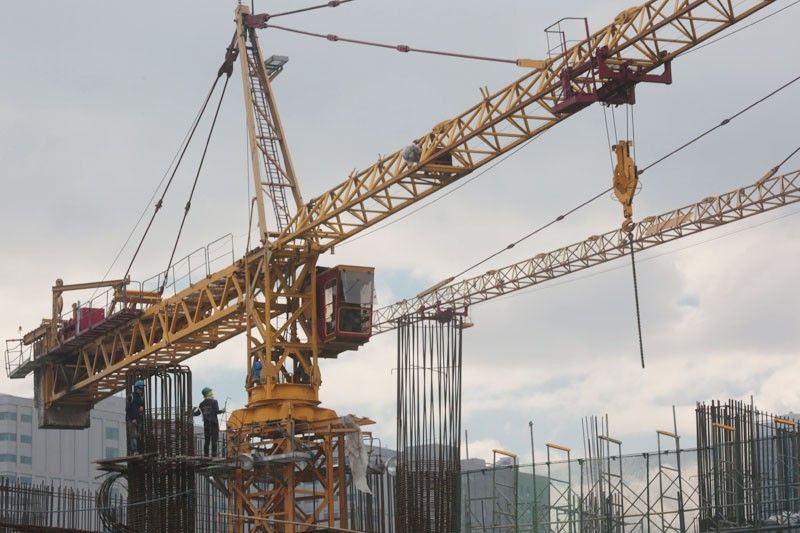Infra spending reaches P1.64 T under Duterte administration

MANILA, Philippines — Public spending on infrastructure amounted to P1.64 trillion in the first 10 quarters of the Duterte administration, or equivalent to four percent of the country’s gross domestic product (GDP), according to the Department of Finance (DOF).
In a speech during the UP Women Lawyers Circle Business Conference held last week, Finance Secretary Carlos Dominguez said actual disbursements on infrastructure and other capital outlays in the past 10 quarters reached P1.64 trillion, exceeding the government’s target of P1.63 trillion for the same period.
Dominguez said this was also higher than the infrastructure disbursements of the previous administration in all its six years, which amounted to P1.57 trillion, 78 percent of the programmed spending of P2.01 trillion, and equivalent to 2.3 percent of GDP.
“Our aggressive spending on infrastructure demonstrates that the lead agencies in the Build Build Build program are moving faster than expected. The old problem of absorptive capacity has been solved,” Dominguez said.
The finance chief said the Duterte administration seeks to sustain its pace of spending for infrastructure, and expects to invest over P8 trillion for the infrastructure program by the end of the Duterte administration in 2022.
“By then, we would be able to close the country’s infrastructure gap. This represents major pump priming for the economy. We have already seen private enterprises prepare to participate in the Build Build Build program by importing capital goods from abroad. While the massive importation widened the balance of trade deficit in the short term, the capital goods that have been acquired will continue to create wealth for our economy for many years to come,” Dominguez said.
Infrastructure and other capital outlays were a major contributor to government expenditures, which grew by 21 percent to P3.41 trillion in 2018 from P2.82 trillion in the previous year. This translated to an expenditure effort of 19.6 percent, the highest ever achieved in the past 28 years.
According to Dominguez, public spending has been one of the major drivers of economic expansion in 2018, which settled at 6.2 percent.
Aside from this, he also cited robust capital formation, investments and domestic demand as some of the other factors which propelled growth last year.
“As a share of GDP, capital formation, which is the most comprehensive measure of investment, rose to 27 percent last year compared to 25 percent in 2017. This is remarkably higher than the 21-percent average share of investments to GDP for the past 16 semesters,” Dominguez said.
He said foreign direct investments in the first 11 months of 2018 also reached $9.1 billion.
“We are confident the full-year FDI level can reach or even exceed the previous record high (of $10 billion),” Dominguez said.
Meanwhile, he said improved purchasing power as a result of the personal income tax cuts under the Tax Reform for Acceleration and Inclusion (TRAIN) Law helped boost domestic demand last year.
He said this is shown by the double-digit growth in the sales and the high profit-margins of publicly-listed retail giants and real estate companies.
Dominguez said the TRAIN Law also helped improve the government’s revenues in 2018, which rose by 15 percent to P2.85 trillion from P2.47 trillion in 2017.
Tax revenues, for its part, grew by 14 percent year-on-year to P2.57 trillion, translating to a tax effort of 14.7 percent, the highest ever achieved in the past 20 years.
The economy’s growth slowed down to 6.2 percent in 2018, missing the government’s revised target of 6.5 percent to 6.9 percent.
For 2019, Dominguez said the Duterte administration expects to see faster economic growth, especially with inflation beginning to slow down within the two to four percent target.
He also expressed confidence that the remaining packages under the Comprehensive Tax Reform Package would be approved later this year.
“2019 is the year to complete the policy and tax reforms. 2020 will be the year our people start feeling what it means to be an upper middle-income economy. We will be the growth leader for the region and an inspiring study for other emerging economies,” he said.
- Latest
- Trending
























